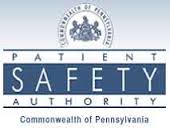Medicaid Directors Set Goals for First 100 Days
The National Association of Medicaid Directors has published a paper detailing its objectives for its interaction with the Trump administration during that administration’s first 100 days in office.
 We call upon the new Administration to convene with NAMD’s Board of Medicaid Directors to solidify specific areas for ongoing collaboration to be carried out and reflected throughout our respective agencies.
We call upon the new Administration to convene with NAMD’s Board of Medicaid Directors to solidify specific areas for ongoing collaboration to be carried out and reflected throughout our respective agencies.
The Administration should make two updates to the process for developing federal Medicaid regulations and guidance. First, build in a step for engaging states during the pre-conceptual phase of work. Second, establish a distinct process whereby state Medicaid leaders can review federal regulations and guidance prior to finalization to ensure policies are operationally sound.
NAMD also calls for the administration to foster state-federal collaboration in the following areas:
- Alternative Payment Methodologies
- Medicare and Medicaid Dual Eligible Population
- Prescription Drugs
- Managed Care/Risk-Based Delivery Models
- Behavioral Health Issues
- Access to Services
- Home and Community Based Services
- Department of Labor & the Fair Labor Standards Act
- Medicaid Management Information Systems
- Transformed Medicaid Statistical Information Services
- Other Existing Regulations
Learn more about NAMD’s goals for the first 100 days of the Trump administration in the association paper “The First 100 Days: Laying the Groundwork for a Successful Federal-State Medicaid Partnership.”
 The Pennsylvania Patient Safety Authority has published its December 2016 newsletter.
The Pennsylvania Patient Safety Authority has published its December 2016 newsletter. According to the federal Substance Abuse and Mental Health Services Administration, the program is
According to the federal Substance Abuse and Mental Health Services Administration, the program is In this new model, the Innovation Center
In this new model, the Innovation Center
 And while operating margins for psychiatric and specialty hospitals declined, they still remain generally strong at 8.81 percent and 7.78 percent, respectfully.
And while operating margins for psychiatric and specialty hospitals declined, they still remain generally strong at 8.81 percent and 7.78 percent, respectfully.

